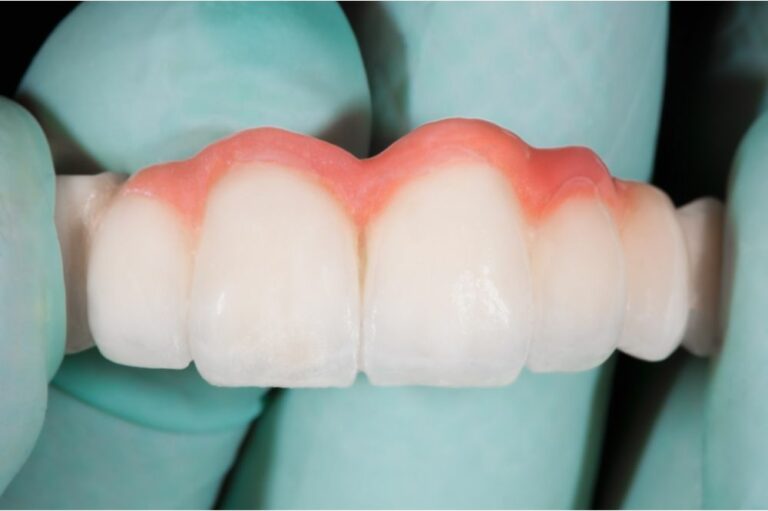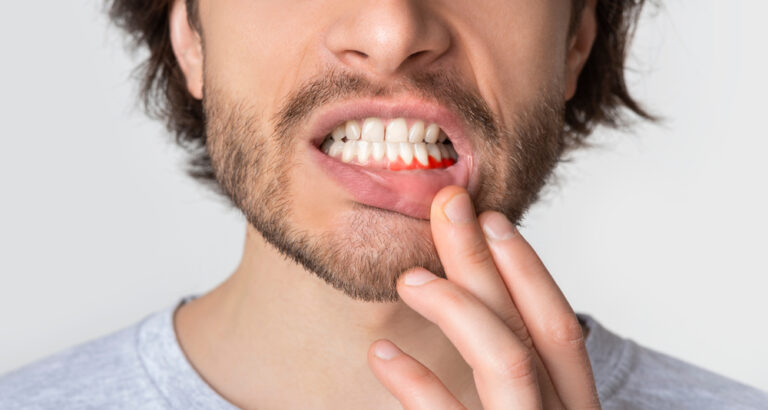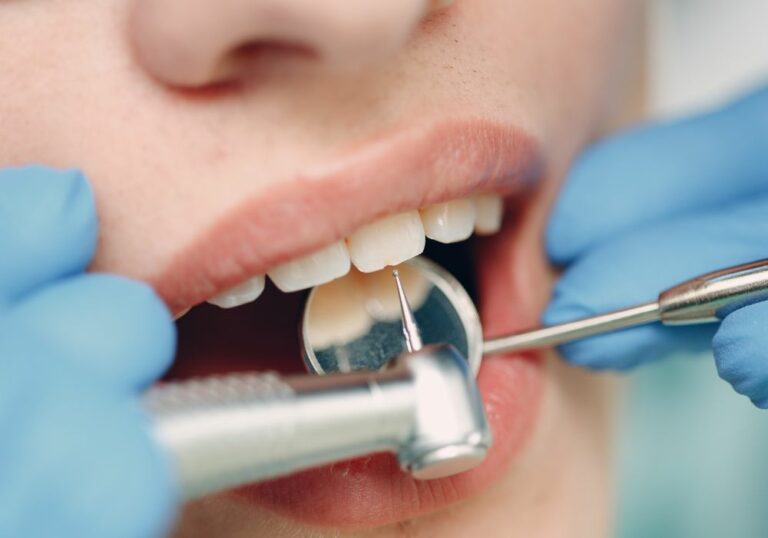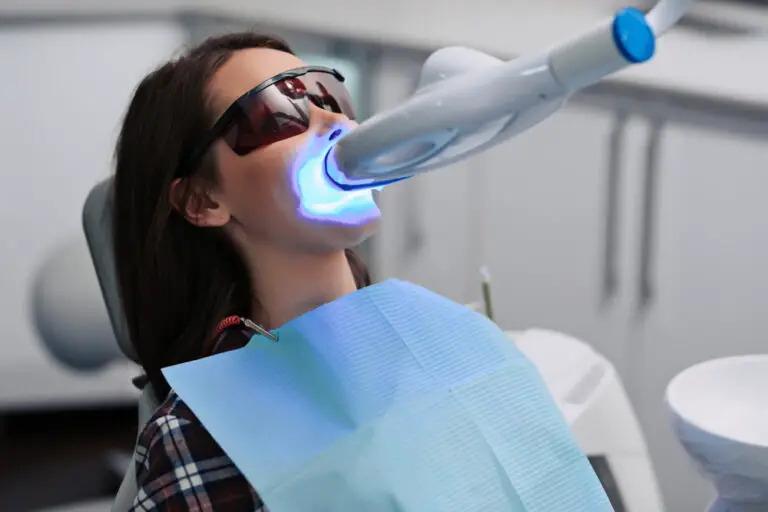Dental bleaching is an extremely popular procedure for people seeking a brighter, whiter smile. But one of the most common questions people have is “how long will it last?” This comprehensive guide examines all aspects of dental bleaching longevity, delving into the different methods, individual factors, lifestyle habits, and best practices for maximizing results.
Overview of Dental Bleaching Methods
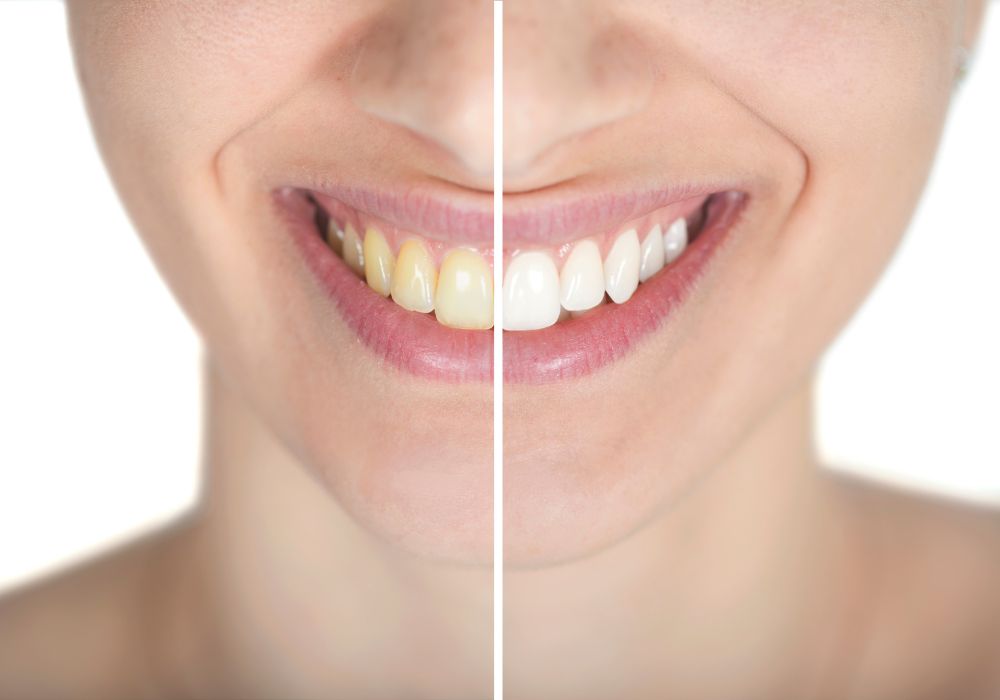
There are three main methods that dentists use to professionally whiten teeth:
In-Office Bleaching
This technique is performed completely at the dental office, typically in a single visit. The dentist will first isolate the teeth from saliva by using cheek retractors, dams, or other devices. Then they apply a high-concentration hydrogen peroxide-based bleaching gel, between 25-35%, directly to the teeth.
A specialized curing light is often used to accelerate and activate the bleaching gel. The entire process takes about 60-90 minutes. Sometimes a second follow-up treatment is done to finalize and even out results.
Longevity: In-office bleaching offers dramatic whitening, but due to the short treatment time, results tend to relapse sooner. On average, teeth lightened from in-office bleaching alone can regress in 9-12 months.
At-Home Bleaching Trays
This involves having custom-fitted plastic trays made to hold bleaching gel against the teeth overnight or for several hours per day. At-home trays allow the lower concentration gel, typically 10-22% hydrogen peroxide, to work gradually over an extended treatment period of 2-6 weeks.
Patients are given detailed instructions on usage and provided several syringes of bleaching gel to refill trays during the treatment period until desired whitening is achieved.
Longevity: At-home bleaching trays offer gentler but longer-lasting whitening, with average duration of 12-24 months before touch-ups are needed.
Combination In-Office and At-Home Bleaching
As the name suggests, this combined technique starts with dramatic in-office bleaching, followed by customized at-home trays for maintenance and longevity. Many patients appreciate the rapid visible whitening from in-office treatment, reinforced and stabilized by several weeks of tray bleaching.
Longevity: Combining both methods allows patients to enjoy whiter teeth for an extended 18-36 months on average before considering touch-ups.
While these timeframes represent averages, real-world results vary based on each person’s individual characteristics and behaviors. Let’s look closer at the factors that influence how long bleaching results will last.
Factors That Influence Longevity of Bleaching
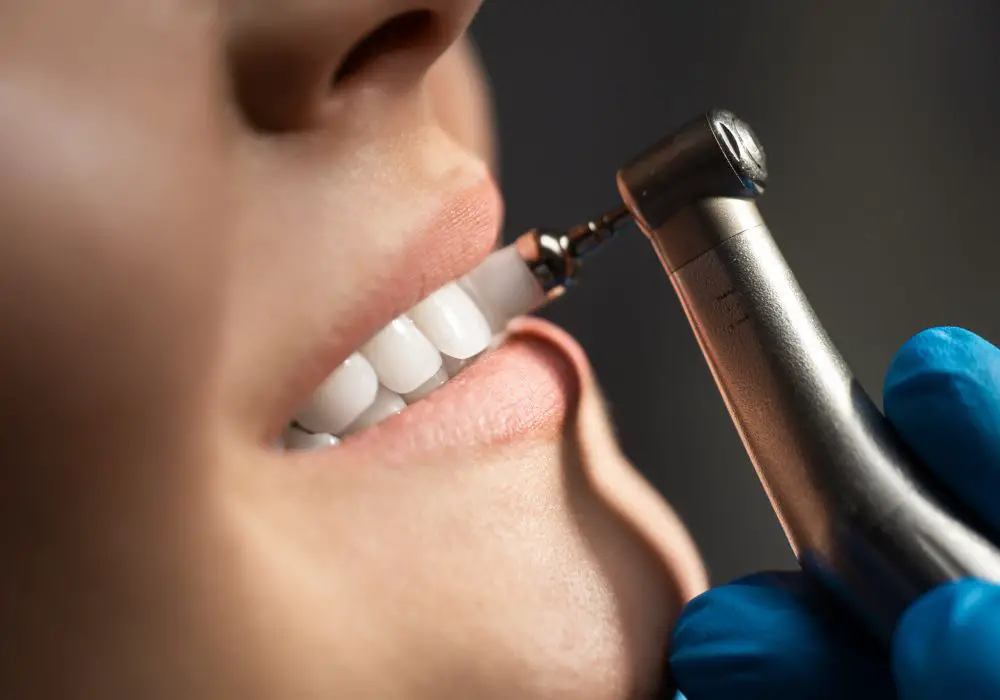
Several key factors work together to determine the longevity of dental bleaching for each patient:
Baseline Tooth Shade and Staining
- Teeth that are mildly yellowish or stained whiten better and stay whiter longer than teeth with moderate to severe intrinsic staining or grayish discoloration.
- Very white or translucent teeth may not bleach as dramatically but the results remain relatively stable.
- Specific types of dental staining, like tetracycline, may take longer to fully bleach and be more prone to relapse.
Enamel Thickness and Permeability
- Teeth with thicker, less permeable enamel hold onto bleaching better than thinner, more porous enamel.
- Enamel defects from genetics, trauma, or prior decay can allow stains to seep in and diminish bleaching results faster.
Age of Patient
- Younger patients tend to get longer-lasting whitening compared to older patients as enamel permeability increases with age.
- Teens and 20s may enjoy 18-36+ months of whitening before needing a refresh while people 50+ may relapse sooner.
Habits After Bleaching
- Smoking or chewing tobacco will stain bleached teeth significantly faster. Each cigarette or dip introduces thousands of pigment particles.
- Frequent coffee, tea, red wine, dark sodas, berries, tomato sauce, curry and other staining foods or drinks impact results.
- Strictly avoiding staining substances greatly prolongs tooth whitening longevity.
Oral Hygiene and Professional Care
- Meticulous daily brushing, flossing, and use of whitening toothpastes help maintain results.
- Consistent professional cleanings every 6 months prevent extrinsic stains from accumulating on bleached teeth.
As you can see, longevity varies based on the individual characteristics of each patient. Your dentist will take these factors into account when advising you on the optimal bleaching methods and follow-up schedule.
Lifestyle Habits That Extend Whitening Longevity
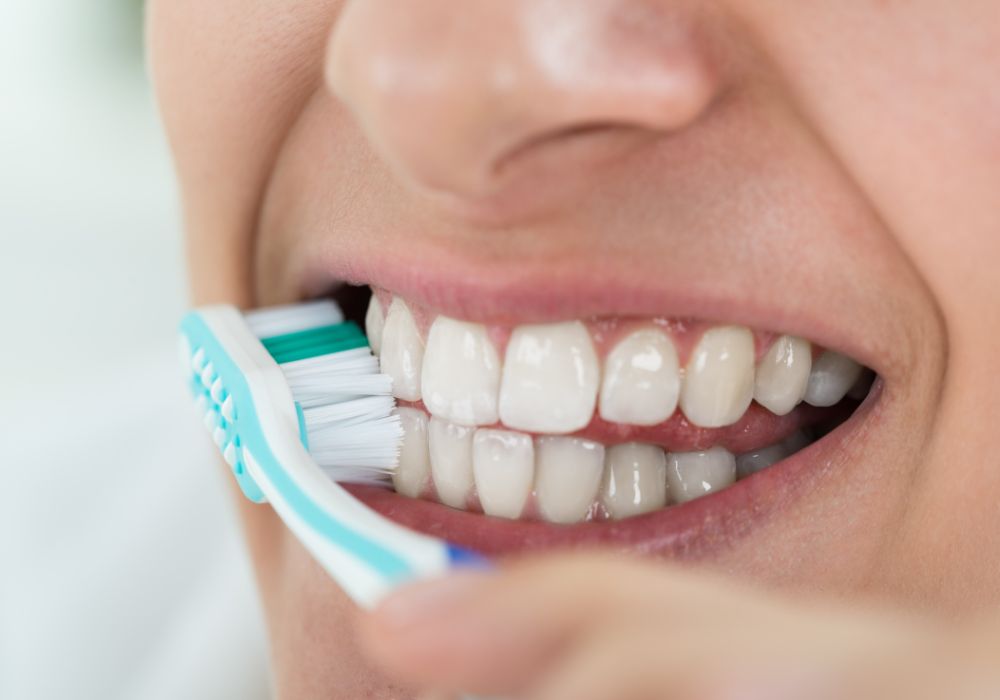
Certain daily habits and behaviors can significantly influence how long your investment in a brighter smile will last. Here are some tips for prolonging that post-bleaching sparkle:
- Brush twice and floss thoroughly once daily
- Use a whitening toothpaste containing silica, hydrogen peroxide, or baking soda
- Rinse daily with an alcohol-free whitening mouthwash
- Chew sugar-free gum to increase saliva flow
- Drink water frequently to help rinse away pigments and stains
- Avoid smoking or chewing tobacco
- Limit staining foods and beverages like coffee, tea, wine, berries, and tomato sauce
- Use a straw when drinking dark liquids to minimize enamel contact
- Have professional cleanings every 6 months religiously
- Apply touch-up bleaching gels periodically using retainers or trays
Following these simple steps enables most patients to stretch their results as long as possible. Work with your dentist to establish habits and oral care techniques tailored to your individual needs and lifestyle.
Developing an Ongoing Bleaching Maintenance Routine
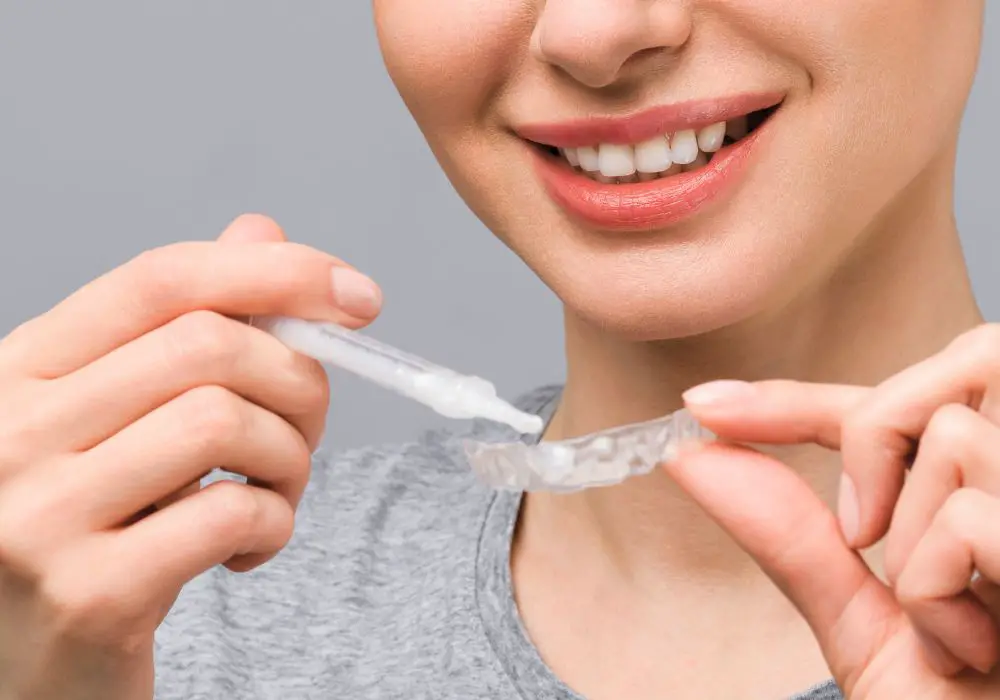
To enjoy a lifetime of a whiter smile, it is important to make dental bleaching an ongoing routine, not just a one-time event. Here are some tips for maintaining bleaching between treatments:
- Use custom-fitted whitening trays periodically at home with touch-up gels provided by your dentist. Refilling bleaching trays every 4-6 months will keep teeth fresh between annual appointments.
- Come in to the dental office once a year for an in-office “boost” to re-energize your whitening. For combination methods, this can be done every 12-24 months.
- Schedule professional cleanings at the hygienist every 6 months to remove any accumulated extrinsic stains and keep teeth polished.
- Monitor your smile closely and come in sooner rather than later if you notice fading or darkening. Nipping regression in the bud will yield better results.
- Update your custom whitening trays annually as teeth shift slightly over time. Ill-fitting trays reduce effectiveness.
- Discuss newer bleaching technologies and products periodically, as manufacturers are always innovating new whitening methods and formulas.
With diligent oral care habits, strategic professional treatment, and consistent touch-ups, you can enjoy permanently whiter teeth for years, or even decades to come.
When to Consider Bleaching Redone or Refreshed
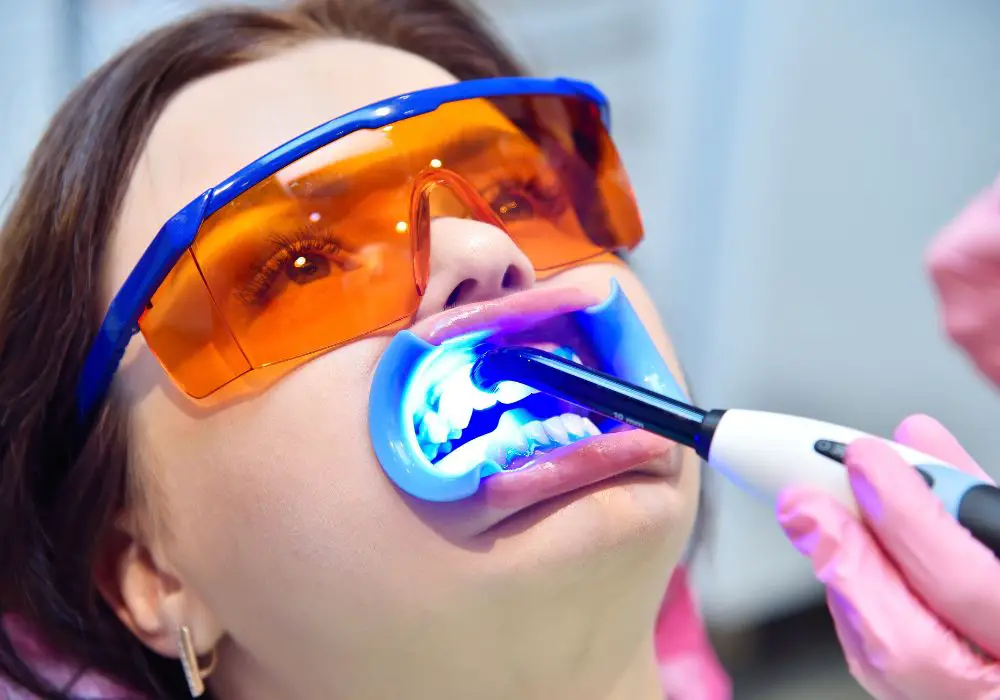
No two smiles are exactly the same, so optimal treatment frequency varies. But in general, here are some signs it is time to have your dental bleaching redone or refreshed:
- Noticeable fading, yellowing or darkening, especially at gum lines or between teeth
- Teeth shade appears uneven or splotchy
- Friends, family or your dentist comment your teeth seem less white
- You are dissatisfied with the current whiteness level
- Tooth-colored restorations like fillings, crowns or veneers now stand out against natural teeth
- Comparing old photos reveals your teeth used to be brighter right after bleaching
- Dark stains have returned due to smoking, wine, tea or other habits
The moment you begin to feel your smile is not as vibrant and white as you wish, make an appointment to refresh your bleaching. Acting quickly at the first signs of regression will provide better results compared to letting staining and yellowing accelerate. Most dentists suggest re-bleaching every 12-24 months.
The Impact of Age on Whitening Longevity
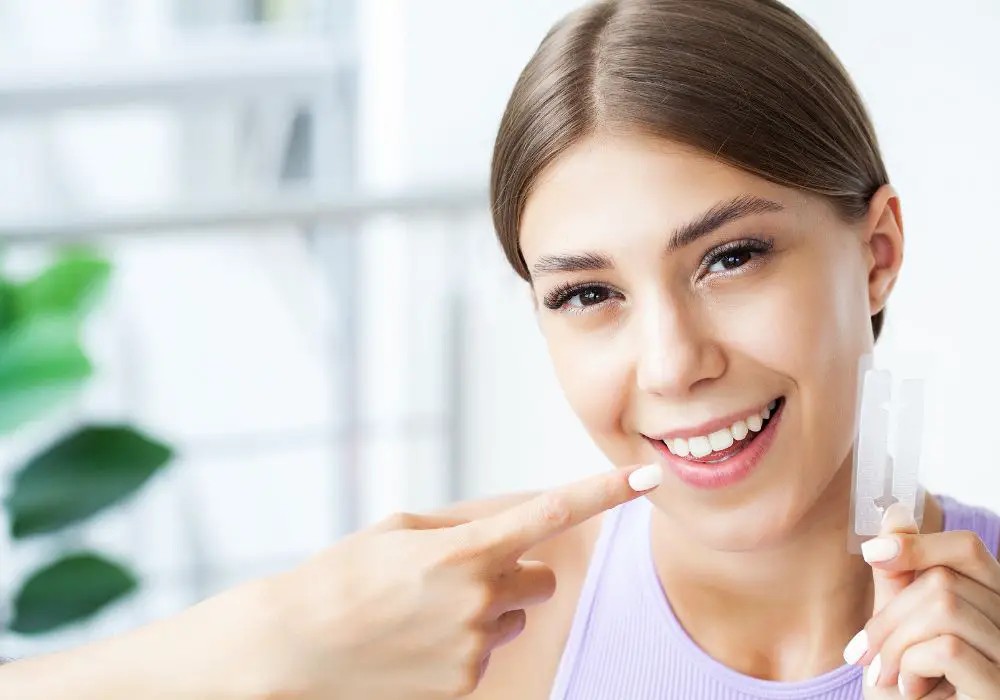
Why does dental bleaching wear off faster as we get older? There are two primary reasons:
Enamel changes: Enamel becomes more porous and permeable over time, which allows stains to seep into the underlying dentin more readily. Micro-fractures and defects also increase, making it easier for pigments to ingress.
Gum recession: As gums recede with age, more of the porous root surface becomes exposed. Root structure has far less enamel and stains more easily than enamel on the crowns of teeth. Receding gums also make teeth appear darker as more of the yellowish dentin is visible.
Therefore, patients in their 40s, 50s and beyond may need to refresh bleaching more frequently than younger patients in their 20s and 30s with intact enamel and healthy gums. However, with the right maintenance routine, people of any age can enjoy long-lasting whitening.
Conclusion
While individual longevity varies, dental bleaching results can last anywhere from 9 months to over 3 years depending on the method and your habits. In-office bleaching may fade in 9-12 months, while customized trays or combination techniques allow you to enjoy a whiter smile for 18-36 months on average. Patients who maintain diligent oral hygiene, avoid staining habits, get professional cleanings, and use periodic touch-ups can maximize bleaching longevity considerably. Work closely with your dentist to develop the optimal long-term whitening regimen for your needs, budget and lifestyle. With the right maintenance approach, you can enjoy permanently brighter smile for years or decades to come.

